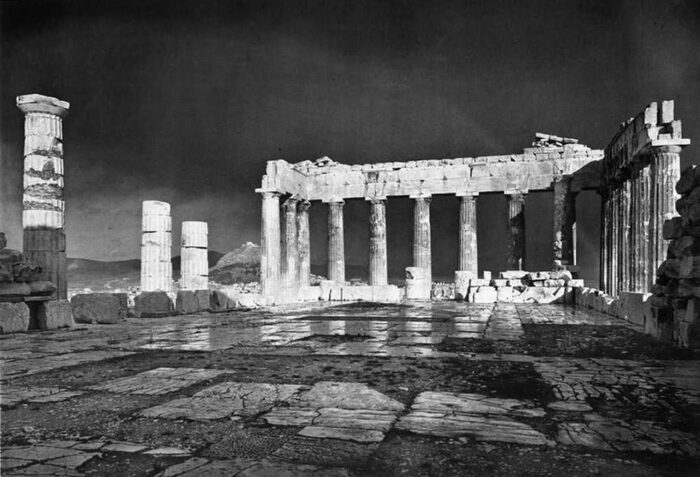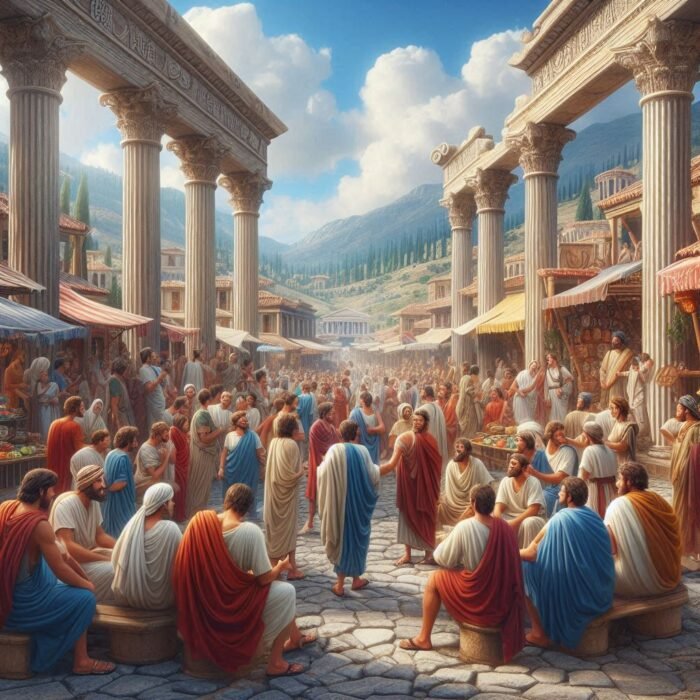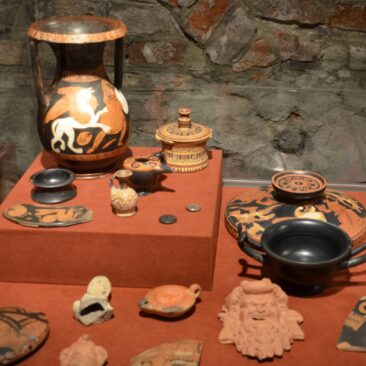Last updated on October 16th, 2025 at 12:55 am
Long ago, storytellers imagined that the islands and mountains of this land were set apart for a special purpose. Among the scattered rocks of the Aegean and the golden shores of the Ionian, the Hellenes built homes, cities, and myths. Over centuries, they shaped a culture and a civilization that would echo far beyond these shores.
Here begins a journey through Hellas, the Land of Gods — a land where history, mythology, and the everyday lives of its people intertwine in ways both magical and real.

Dear explorers,
Welcome to the Greece Travel Guide: Hellas, the Land of Gods. This guide isn’t about booking trips or visiting the usual tourist spots. Instead, it’s an invitation to explore the enduring culture, hidden stories, and timeless traditions that make this land so remarkable.
Hellas is far more than sun-soaked beaches, whitewashed houses, or ancient monuments. It’s a land where myths and history intertwine, where the echoes of gods and heroes still linger, and where civilization continues to thrive in the daily lives and creativity of its people.
Though small in size, Hellas boasts an impressive concentration of artists, writers, poets, and musicians. Modern Greek culture resonates with echoes of the past while remaining alive, dynamic, and deeply human.
In the first chapter that follows, we’ll explore modern Greek music — a world far richer than the familiar tune of “Zorba the Greek.” That melody may be iconic, but it only scratches the surface of the musical traditions that have thrived here for millennia.
All Posts to Greece
Greece’s Culture and History
Greece is a land where history and culture stretch back thousands of years. From the monumental ruins of the Acropolis in Athens to the ancient theaters of Epidaurus, the country offers a rich tapestry of architecture and art that has shaped the world.
Greek culture is a blend of ancient traditions and modern creativity. Museums and archaeological sites preserve the legacy of civilizations that contributed to philosophy, science, and democracy. At the same time, contemporary Greek life thrives with vibrant arts, music, and festivals celebrated across cities and islands.
Music, dance, and visual arts are central to Hellenic heritage. Traditional styles, such as the Cretan syrtos or island folk songs, coexist with modern genres, while theater and painting continue to flourish. Whether it’s classical works in Athens or contemporary exhibitions in Thessaloniki, Greece’s cultural scene is alive and diverse.
Greek gastronomy also tells the story of its people and history. Local recipes often combine centuries-old techniques with fresh, regional ingredients, offering a taste of tradition in every meal. From savory moussaka to fresh seafood along the coast, food is an essential part of the cultural experience.
Walking through the streets of Greece, you encounter traces of history at every turn — ancient temples, Byzantine churches, and Venetian fortresses. Each region has its own traditions, crafts, and festivals, offering visitors a chance to experience the variety and depth of Greek life.
In short, Greek culture and history are less about national pride and more about a shared human heritage. From ancient philosophy to modern arts, from island festivals to archaeological wonders, Greece offers a rich cultural journey for every traveler.
Plan Your Trip to Greece
If you’re dreaming of a trip that looks like it’s straight out of a painting, then Hellas is where your adventure begins. And guess what? It’s not just about stunning islands and picturesque villages – this country is practically a time machine to ancient wonders and a playground for all kinds of travelers.
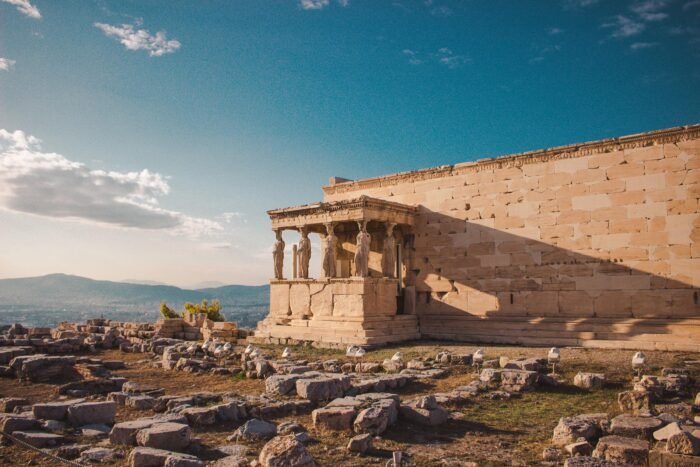
Let’s start with the obvious: the iconic islands. From the moment you see the blue domes of Santorini against the backdrop of the Aegean Sea, you’ll know you’ve hit the travel jackpot. And let’s not even start about Mykonos, where the wind dances through narrow streets and the parties never stop.
Imagine being on a golden beach, the sun kissing your skin, and the crystal-clear waters of the Aegean stretching out in front of you. And guess what? That’s just the tip of the iceberg when it comes to Greece’s natural allure.
But hold on tight, because Greece has more tricks up its sleeve than just the magic of the islands. We’re talking about a journey through time and the ruins that hide the stories of ancient civilization. The Parthenon in Athens? Oh, it’s not just a selfie backdrop – it’s a living piece of history. And if you’re ready for a bit of archaeological adventure, the ruins of the palace of Knossos in Crete will transport you to a time thousands of years ago.
But here’s the best part: Hellas isn’t just for one type of traveler. Whether you love life in luxury resorts or you’re eager for a backpacking adventure, Hellas opens its doors to everyone. Seriously, imagine enjoying delicious Greek cuisine in charming villages, diving into crystal-clear waters on white sandy beaches, and discovering the elements of culture that make Hellas truly unique.

And guess what? This guide is your golden ticket to making the most of your adventure in Hellas. From historical landmarks to vibrant cities and stunning natural beauty, we’ve got you covered. Whether you’re into romance or adrenaline-pumping adventures, these Greek islands have your name written all over them.
So, whether you’re lounging on a coastal cliff, conquering an epic hiking trail, or simply enjoying the warm Mediterranean sun, Greece is here to fulfill your travel dreams. And the best part? You don’t need to cross an ocean to enjoy tropical weather – Hellas offers that too.
So grab your luggage, pack your curiosity, and get ready to dive into a world where ancient history meets stunning landscapes, and every day feels like pure magic. Your adventure in Greece awaits!
Top Travel Tips for Greece
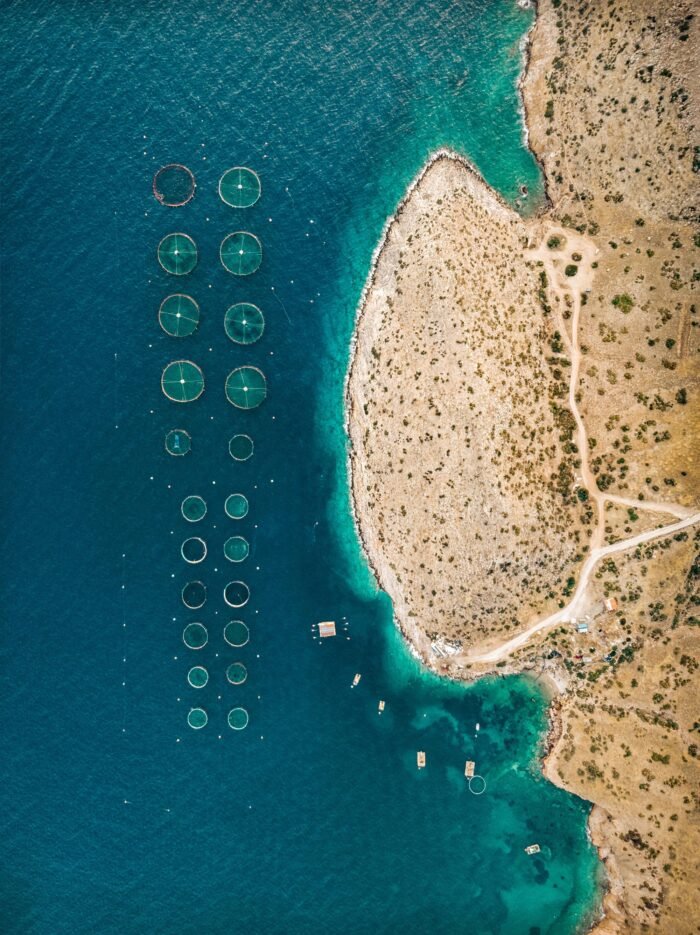
Before you jet off to ancient ruins and sun-soaked beaches, here’s a little secret: a killer Greece travel guide is your ticket to a hassle-free adventure.
You’ve got all the practical deets right at your fingertips. From transport tips to accommodation gems, local customs, and safety know-how – it’s all in there. Imagine exploring ancient Athens like a pro and savoring Greek delights like Souvlaki and Baklava. Yum!
Now, let’s talk about culture. Immerse yourself, respect traditions, and embrace local norms. Trust us, it’ll make your Greek getaway even more epic. And hey, knowing what you can or can’t bring into the country (like certain food items) is a game-changer – avoid those awkward border control moments.
Speaking of game-changers, visa requirements, and customs laws – let’s decode them with your trusty guide. And hey, no worries about currency exchange rates or weather surprises – your guide’s got your back.
Now, the real adventure begins. From historic sites that’ll blow your mind to stunning beaches that’ll steal your heart, Greece has it all.
Oh, and did we mention the nightlife? Get ready to dance your heart out and make memories that’ll last a lifetime.
So, gear up for an unforgettable Greek escape. With your travel guide in hand, Hellas is yours to explore – from its ancient wonders to its vibrant present.
Get ready for an adventure that’s equal parts history, culture, beauty, and pure fun. Hellas, here you come!
Must-See Attractions in the Greek Islands

From the enchanting streets of Santorini to the hidden vineyards of Crete, Greece is calling your name!
Imagine strolling through Athens’ Acropolis, soaking in ancient tales. Or diving into Rhodes’ crystal waters for an afternoon snorkel. And oh, the food – seaside tavernas serve up a taste of Greek heaven!
Whether you’re into history or relaxation, Hellas has your back. Explore iconic landmarks like Delos and Delphi – a time machine to centuries past.
But wait, there’s more! Don’t miss the smaller gems like Hydra and Ios. Hydra’s charming port and Ios’ vibrant nightlife offer unique slices of Greek paradise.
So, add Hellas to your travel map. A journey through history, culture, and breathtaking landscapes awaits. Trust us, these islands will steal your heart – one stunning vista at a time.
Beautiful Greek Landscape
Get ready to fall head over heels for Greece’s jaw-dropping landscapes!

Imagine yourself on sunny beaches with the blue waves of the Aegean lapping at your feet. And on the Ionian side, golden sands meet emerald waters – pure bliss!
From majestic mountains to serene shores, Hellas is a country full of natural wonders. So whether you’re chasing waves or gazing at mountain peaks, Hellas is for you. It’s the perfect paradise for beach lovers and nature explorers alike.
Vibrant cities of Hellas
Get ready to embark on a journey of discovery through Greece’s amazing cities and charming villages!

Whether you’re strolling through the bustling streets of Athens, feeling the pulse of Thessaloniki, or immersing yourself in the history of Heraklion, an urban adventure awaits you.
But wait, there’s more! Imagine wandering through the charming villages of Mykonos, Santorini, and Rhodes – each with its unique atmosphere and secrets.
So, whether you’re a city explorer or a lover of the outdoors, Hellas is full of new experiences waiting for you to discover them!
Ancient Ruins and Temples
Imagine taking a step back in time as you find yourself in the enchanting Greek countryside. Get ready to discover Europe’s most iconic ancient ruins and be amazed by the stunning architecture of historic wonders like the legendary Parthenon.
But wait, there’s a secret weapon to make your Greek adventure even more epic – a reliable travel guide to Hellas! It’s your ultimate tool to create the perfect exploration plan, whether you’re diving into the vibrant culture of Athens or wandering the bustling streets of the city.
And speaking of Athens, brace yourself for the ultimate Greek experience: a visit to the Acropolis that will leave you in awe. It’s a journey to the heart of classical Hellas, where monumental treasures await your discovery.
So, are you ready to write your own Greek adventure story? Let’s explore!
Exciting Outdoor Activities in Greece

Get ready to lace up your hiking boots and embrace the excitement of the Greek outdoors! Whether you’re an experienced hiker or seeking some fun on the beach, Hellas has got you covered.
If you’re up for a challenge, the mountains are calling with trails that will take your breath away – literally and figuratively! But hey, if the idea of catching some waves or snorkeling in warm coastal waters tickles your fancy, the beach scene has your name written all over it!
And let’s not forget the buffet of outdoor activities spread out before you. From hiking to water sports, even kayaking, the Mediterranean charm of Hellas caters to the heart of every adventure lover.
Greece doesn’t just offer experiences; it creates memories that last. Whether you’re a solo wanderer, a family seeking fun, or a couple looking for romance, this Mediterranean paradise is ready to steal your heart. So, what are you waiting for? The Greek adventure awaits!
Food and Gastronomy

Calling all food lovers!
Get ready to embark on a magical culinary journey in Hellas! From Mediterranean delights to classic Greek recipes, this country is a paradise for food enthusiasts.
Are you ready to dive into the heart of Greek culture? Exploring the islands is not just about soaking up the sun – it’s about savoring every bite of local cuisine.
Imagine sinking your teeth into a juicy gyro, indulging in layers of moussaka, and relishing the crispy goodness of spanakopita. Each dish is a love letter to the rich flavors and traditions of Greece.
But here’s the magic: every corner of this beautiful land has its own unique culinary identity. From the simple yet hearty dishes of Crete to the delicious creations of Corfu, the variety is as abundant as the taste.
Get ready for a feast of the senses – think creamy Greek yogurt with sweet honey in Santorini or indulging in the freshest seafood in Mykonos.
So why wait? Dive into the irresistible world of Greek cuisine that tantalizes every palate, from the adventurous to the food connoisseur. Your taste buds are in for an unforgettable adventure!
Adventure Opportunities in Greece

Calling all thrill-seekers and adventure lovers!
Get ready to embark on the ultimate adventure in Hellas! Whether you’re an experienced hiker or seeking some beachside fun, Hellas has got you covered.
If you’re up for a challenge, the mountains beckon with trails that will take your breath away – both literally and figuratively! But hey, if the idea of catching some waves or snorkeling in warm coastal waters tickles your fancy, the beach scene has got your name written all over it!
And let’s not forget the buffet of outdoor activities spread out before you. From hiking to water sports, even kayaking, the Mediterranean allure of Hellas caters to the heart of every adventure lover.
Greece doesn’t just offer experiences; it creates memories that last. Whether you’re a solo wanderer, a family seeking fun, or a couple in search of romance, this Mediterranean paradise is ready to steal your heart. So, what are you waiting for? Dive into the irresistible world of Greek adventure that entices every soul, from the bold to the foodie. Your taste buds are in for an unforgettable adventure!
Most Popular Islands to Visit

Imagine a treasure trove of islands, each holding a piece of Greece’s heart. With 6,000 islands in its embrace, this Mediterranean gem has something truly special to offer.
But here’s the exciting twist – only 227 of them are inhabited, leaving countless hidden gems waiting for you to discover.
Now, let’s dive into their magic! Corfu, with its lush landscapes and vibrant culture, welcomes you with open arms. Santorini, a picturesque dream with its iconic blue roofs and sunset views, awaits your exploration.
For those craving cosmopolitan energy, Mykonos is the ideal destination. The nightlife here is alive, and the beaches are pure bliss. And then there’s Rhodes – a historic gem wrapped in medieval splendor.
But wait – let’s not forget the enchanting allure of Crete. Rustic villages, tantalizing cuisine, and breathtaking landscapes await your arrival.
Here’s the beauty: no matter which island you choose, you’re in for a treat! The warm hospitality and stunning views of Hellas will embrace you like an old friend.
So whether you wander the cobblestone streets of Corfu, watch the sun dip below the horizon in Santorini, or dance the night away in Mykonos – each island promises a unique adventure.
With Hellas’s islands, you’re not just spending your vacation; you’re embarking on a journey that leaves a piece of its magic in your heart.
Corfu

Imagine a paradise that combines enchanting beaches with Venetian charm – that’s Corfu, a jewel nestled on the northwest coast of the mainland.
For sun-seekers, Corfu is a dream come true. From sparkling sands to thrilling water sports, the beaches here are unparalleled. Whether you’re lounging by the waves or riding them, the options are endless!
But wait, there’s more. Corfu is a symphony of experiences waiting to be explored. You can hike coastal trails that offer stunning views at every turn. As the sun sets, the island transforms into a haven of nightlife where the energy is infectious.
And the flavors? They’re a delight. Dive into the local cuisine, a dance of flavors on your palate – a tasty invitation to explore Corfu’s culinary wonders.
Now, let’s talk about culture. Feel the history beneath your feet as you stroll through Corfu’s old town. The Venetian-style buildings whisper tales of the past, and the two Venetian castles are gateways to a different era.
Churches, monasteries, and museums tell the island’s stories, and the traditional villages beckon with their medieval mansions. Retail therapy? Absolutely! From charming markets to chic boutiques, Corfu offers a shopping scene as diverse as its landscapes.
So whether you’re getting lost in cobblestone streets, savoring local delights, or unraveling the island’s history, Corfu promises an unforgettable adventure. Your possibilities are endless when you choose Corfu for your getaway!
Santorini

Enter the enchanting canvas of Santorini, a true superstar among the Greek islands. Thousands flock to its shores every year, and it’s no wonder why.
Imagine a dramatic volcanic landscape adorned with whitewashed buildings topped with vibrant blue roofs. These perched wonders overlook the mesmerizing azure sea of the caldera below. It’s like a dream!
But Santorini has more than meets the eye. The island carries a romance as tangible as the salty sea breeze. It’s no coincidence that this gem ranks among the top honeymoon destinations in the world – Greece’s best-kept secret, whispered in the hearts of lovers everywhere.
Are you ready to uncover treasures? How about wandering through charming wineries and delving into archaeological sites echoing stories of centuries past? Or perhaps you’re content to surrender to the breathtaking view of the caldera, visible from countless vantage points across the island?
Here’s a staggering fact: Santorini is the legacy of a colossal volcanic eruption, a natural spectacle that unfolded 3600 years ago. In those fiery moments, two-thirds of the island vanished beneath the waves, leaving behind a captivating history etched in its rugged contours.
Look at the sea that now lies within the ancient caldera – the same caldera that once held the power of destruction. To witness this history, visit Akrotiri, where echoes of that catastrophe still linger. Known as the “Pompeii of Hellas,” the ruins of Akrotiri reveal a disaster that occurred 15 centuries before Pompeii. A disaster that spelled the end of Crete’s Minoan civilization at the time.
So, whether you’re tracing the footsteps of history or savoring every sunset-drenched moment, Santorini will captivate your senses and leave an indelible mark on your heart.
Mykonos

Welcome to the enchanting kingdom of Mykonos! Where cobblestone pathways wind through a dreamy landscape of whitewashed buildings topped with vibrant blue roofs. As if that wasn’t enough, flower-filled pots create a kaleidoscope of colors, painting the island in nature’s hues. It’s truly a sight to behold!
But there’s more to Mykonos than its mesmerizing aesthetic. Here’s a little secret: the island’s nickname is “The Island of the Winds.” Why is that? These powerful, playful winds dance across the landscape, infusing it with a note of magic and romance.
And let’s talk about nights that turn into days – Mykonos knows how to party! It’s no wonder this vibrant island is famous for its lively nightlife that blurs the lines between dusk and dawn. From bustling bars and nightclubs to seaside joints and delightful restaurants, Mykonos promises a frenzy of fun.
But wait, there’s more! During sunny hours, Mykonos transforms into a shopping haven. Local artisans bring their creations to the streets, offering you the chance to take home a piece of this idyllic paradise.
So, if you dream of an adventure on an island that combines beauty, nightlife, and shopping, Mykonos is the destination for you. Whether you’re captivated by its cobblestone alleys or enchanted by its lively nights, Mykonos is an experience you won’t want to miss. Be sure to add it to your travel plans in Hellas!
Crete
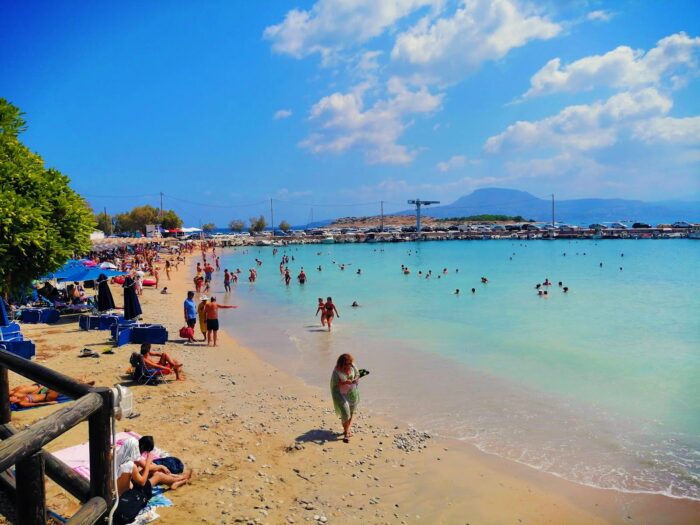
Crete, the largest Greek island, is a land of contrasts — mountains, beaches, and ancient ruins. Explore the Minoan Palace of Knossos, wander through traditional villages, or hike the Samaria Gorge. The island’s cuisine is legendary, from fresh seafood to cheeses and raki. Crete offers history, adventure, and gastronomy in one sweeping experience.
Rhodes

Rhodes blends medieval history with sun-soaked beaches. Walk through the UNESCO-listed Old Town, admire the Palace of the Grand Master, and explore ancient ruins at Kamiros. For nature lovers, Lindos offers hiking trails with panoramic views. The local tavernas serve freshly caught seafood and traditional mezes, making Rhodes a balanced mix of culture and relaxation.
Zakynthos

Zakynthos, famous for Navagio Beach and its dramatic cliffs, is a paradise for beach lovers and photographers. Beyond the iconic shipwreck cove, explore blue caves, hidden coves, and traditional villages. Turtle spotting in Laganas Bay adds an eco-adventure dimension to the island experience.
Kefalonia

Kefalonia offers rugged landscapes, turquoise waters, and charming villages. Myrtos Beach is legendary for its postcard-perfect beauty. Hike to Mount Ainos, explore Melissani Cave, and enjoy authentic local cuisine featuring fresh seafood and local cheeses.
Beyond the Main Islands

Other hidden gems include Naxos with its ancient temples, Paros with traditional villages, and Hydra, a car-free haven perfect for strolls. Delos offers sacred ruins, while Ios entices the young and adventurous with vibrant nightlife and pristine beaches.
Hellas’s islands collectively offer a mix of adventure, relaxation, history, and gastronomy. Each island tells its own story, blending ancient culture with natural beauty, making every visit an unforgettable journey.
About this Travel Guide to Greece

We want to help you discover the magic of Greece and its stunning islands.
We have created a guide that not only provides you with the usual travel tips but also delves into the rich history and enchanting mythology that have shaped this incredible nation.
Step into the past as we unravel the stories of the Greek gods and the creation of the world according to the captivating Greek Theogony. Have you ever wondered about the wild creatures hidden in ancient Greek legends? We have it all here!
And of course, what is a trip to Hellas without indulging in its world-famous beaches? We have curated a treasure trove of articles showcasing the most fantastic coastlines in the Greek islands.
But that’s not all – we have a wide range of topics that touch on every aspect of Hellas. From its vibrant culture to its awe-inspiring nature, we are here to fill you with knowledge about this divine land blessed by both gods and nature.
But wait, there’s more! Our guide is equipped with excellent insider tips that are sure to elevate your Greek adventure to new heights. They will turn your Greek getaway into an unforgettable experience – those little gems of advice that only experienced travelers know.
Discover even the best honeymoon destinations in Hellas that will sprinkle some extra magic into your romantic journey.
So, whether you’re a history enthusiast, a beach lover, or a curious explorer, our travel guide to Hellas is the ultimate passport to unlock its treasures. Let’s embark together on an unforgettable odyssey!
Greek Mythology and History
To Conclude
Now that you’ve delved into this guide, you’re practically an expert on the Greek islands! From the bustling streets of lively towns to the tranquility of hidden villages, these islands cater to every wanderlust taste.
Imagine leisurely days by the azure waters, exploring ancient ruins, savoring delicious local dishes, and diving into breathtaking sunsets. Whether you’re in the mood for a relaxed getaway or an adrenaline-filled adventure, Hellas is like a treasure chest waiting to dazzle you with memories you’ll never forget.
So why wait any longer? It’s time to pack your bags and embark on a journey of a lifetime to the enchanting Land of the Greeks! Adventure, discovery, and awe are just one flight away. Make your dreams of Greek sunsets and charming cultural paths a reality!









